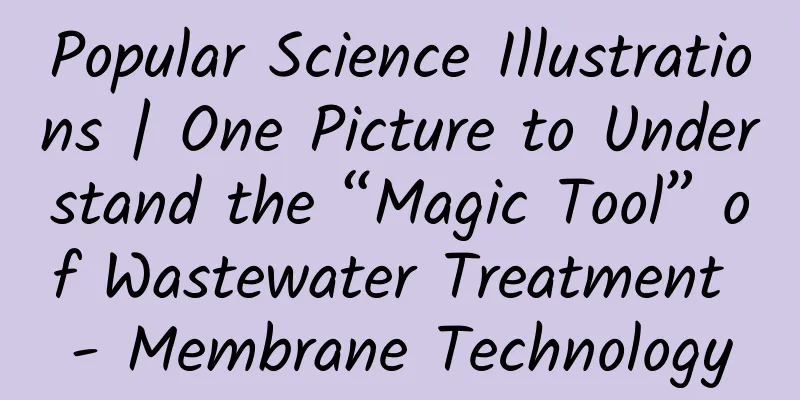If I cut my finger, can I disinfect it by sucking on it in my mouth?

|
"Ouch, your finger is injured, put it in your mouth and suck it." "I heard that saliva can be used for disinfection, and it works." I don’t know when it started (maybe we learned it from watching TV dramas, after all, in TV dramas, people always cut their hands when cutting vegetables), but when our fingers or other parts of our bodies are injured, we will subconsciously put them in our mouths and lick them, thinking that this can disinfect and sterilize and help prevent wound infection. So, does saliva really have this effect? Can saliva kill bacteria, disinfect, and prevent infection? Injured, picture source: pexels Let's first look at the composition of saliva. Saliva has a complex composition Saliva is one of the most complex fluids in the human body. It is mainly secreted by three pairs of large salivary glands, namely the parotid gland, sublingual gland, and submandibular gland, as well as many other small salivary glands, with a secretion rate of about 0.5 ml per minute. When the glands are stimulated by external factors such as eating, hunger or lack of water, saliva secretion increases. The amount of saliva secreted by humans in a day and night is about 1000 to 1500 ml, most of which is actively or passively swallowed into the stomach for reabsorption to maintain fluid balance. The composition of saliva includes water, organic components and inorganic components, and water accounts for more than 99% of all the components of saliva. The inorganic components in saliva are mainly composed of a variety of strong and weak ions, including Na+, K+, Cl-, Ca2+, HCO3-, Mg2+ and NH3. Their main function is to help maintain the acid-base balance of saliva, maintain the osmotic pressure in the body, and promote the perception of taste. The organic components in saliva are mainly proteins and other enzymes, including amylase, lipase and mucin. Different enzymes are involved in the chewing, tasting and swallowing of food in the mouth. For example, amylase is involved in the initial digestion of starch in the mouth, and lipase plays a certain role in the perception of oil taste and texture. In addition, saliva also contains a small amount of lysozyme and growth factors. Lysozyme is an important nonspecific immune factor in the body, which has the functions of antibacterial and anti-inflammatory, improving immunity, and inhibiting the growth of exogenous microorganisms. Biologically active substances such as epidermal growth factor, fibroblast growth factor, erythropoietin, etc. have certain effects in promoting cell growth and angiogenesis, which is why the oral mucosa has a faster renewal and metabolic rate than other tissues. It seems that the cleansing effect of the large amount of water in saliva and the sterilization effect of lysozyme have a certain effect on wounds. Does that mean we can use saliva to treat injuries? ——Of course not, and it is definitely not allowed. Why can't we use saliva to disinfect wounds? First of all, the main function of saliva is to help form food boluses by moistening food, promote swallowing, protect the oral mucosa from mechanical damage, and play a role in the initial digestion of food through the presence of amylase and other enzymes. Secondly, the secretion of saliva is affected by many factors, including a person's age, eating habits, drug intake, living habits, etc. It varies from person to person and is not fixed, making it impossible to accurately and continuously "disinfect and sterilize" saliva. More importantly, the content of lysozyme and growth factors in saliva is extremely small, and it can only be used for simple treatment when medical treatment is inconvenient, and the wound must be small and superficial. Once the wound is deep and involves the subsurface tissue, it may be harmful. At the same time, the oral cavity is one of the areas in the human body with the highest density and most types of microorganisms. Oral microorganisms include bacteria, fungi and viruses, among which bacteria are the main ones. These microorganisms are colonized in the oral cavity, restraining each other, depending on each other, and living in peace. Once they leave the colonization site, they may become pathogenic and even aggravate the infection of the wound. (Warning: Some special wounds, such as cat or dog bites, and wounds pierced by rusty nails, must be vaccinated after standardized disinfection and bandaging to prevent rabies virus and tetanus clostridium infection.) Treating wounds is not just about disinfection It should be noted that wound healing is not simply a matter of disinfection and sterilization. While preventing infection, the wound and its surroundings need to be kept clean. When treating the wound, it is necessary to clean the wound correctly according to the nature and location of the wound to reduce secondary damage. When bandaging the wound, the right size, clean and comfortable dressing should be selected. In addition, it is best not to put pressure on the wound or stick it too tightly to avoid obstructing blood circulation. If the wound shows symptoms such as watery exudate, rot and odor, bleeding and pus, or does not heal for a long time, you should go to the hospital for diagnosis and treatment in time; if you experience shortness of breath, high fever, palpitations, rapid pulse rate, headache and nausea, or the wound does not heal for a long time, you should go to the nearest hospital for treatment as soon as possible. At present, there is no scientific evidence to prove how effective and advantageous saliva is for wounds, how long its effects last, and how to avoid the risk of infectious diseases. It is inevitable to have abrasions and bruises in our daily lives. We cannot simply put them in our mouths and lick them and be done with it. We must clearly realize that no matter the size or depth of the wound, timely and correct medical treatment is required to make the wound heal faster and better, and to avoid causing more serious consequences. Mr. Tadpole: Of course I can’t let my girlfriend suck on my cut finger, because—I don’t have a girlfriend. References: [1]Liu J, Duan Y. Saliva: a potential media for disease diagnostics and monitoring. Oral Oncol. 2012 Jul;48(7):569-77. [2]Qin Lanxi. Study on the correlation between saliva secretion and dietary preferences[D]. Zhejiang Gongshang University, 2019. [3] Jiang Ping, Mao Weiping, Tang Zijin, Cheng Guangyu, Wu Jingyan, Liu Jin, Yang Zuoxian. Study on the biological activity of salivary gland extract and its therapeutic effect on burns[J]. Chinese Food, 2021(S1):76-79. [4]Liu Yuan, Zhang Ling. Research progress on the relationship between oral microorganisms and oral squamous cell carcinoma[J]. Chinese Journal of Oral and Maxillofacial Surgery, 2020, 18(03): 278-284. [5]Qian Wei. Scientific treatment of wounds for faster healing[J]. Family Medicine, 2020(12):30-31. END Audit experts: Wu Xinsheng, deputy chief physician of the Department of Gastroenterology, PLA 371 Hospital Tadpole Musical Notation original article, please indicate the source when reprinting Editor/Heart and Paper |
<<: SpongeBob says goodnight: Do animals without brains also need sleep?
Recommend
Google advertising types and independent website operation skills
When it comes to off-site promotion, the first th...
How far behind is the iPhone 7 Plus, which was launched more than two years later than Honor in terms of dual cameras?
After Cook took over, Apple's innovation has ...
How to delete your own works on Bilibili? How to delete works on Bilibili
This article mainly introduces how to delete the ...
China's Denza to the world's Denza! Denza's overseas expansion to accelerate in 2023
As a luxury new energy brand jointly created by B...
WeChat Pay has good news, becoming the most commonly used app in 2020, beating Alipay for the first time
The popularity of mobile payments When it comes t...
Lenovo takes the lead: Can Challenger Motorcycle be reborn?
[[127123]] Dong Jun At 3 pm on February 26, 2015,...
Download Wang Tong Knowledge Monetization Training Camp Notes Course_Free Online Reading
The secret to becoming an industry expert in 100 ...
How to evaluate the pros and cons of multiple promotion channels?
I have always wanted to write an article like thi...
Which company providing SEO optimization services in Jiuquan is better? How to choose?
Nowadays, due to the increasing bidding costs, ma...
How to operate and promote Weibo? 5 tips for Weibo operation and promotion!
Weibo's business model is already quite matur...
How much does it cost to develop a Lianyungang real estate mini program? Lianyungang real estate applet development price inquiry
There are two types of Lianyungang real estate We...
Apple's trillion-dollar market value may be its last
[[248882]] Image source: Visual China While we st...
A strange woman locked a young child in the toilet to educate him and became a hot topic. Why did the child cry and make a fuss?
Review expert: Peng Guoqiu, deputy chief physicia...
Late-night snacks linked to certain cancers? Don’t eat when you’re hungry before bed!
As staying up late gradually becomes a lifestyle ...
2017 B2B Industry Content Marketing White Paper: How to Disseminate Content Effectively?
With good content, you are qualified to stand at ...









